For Eva Kitok a picture without shading is not worth sewing. In her joyful figurative pieces it is the light and shade that makes the images come to life.
Eva’s work has been selected for numerous juried exhibitions in Sweden and internationally since 2016, including the Liljevalchs Spring Show, Stockholm in 2018 and 2019. Her latest exhibition was held at Kalix Konsthall (art hall) in March and she has another solo exhibition at Bodens Konstgille (art guild) later in the year.
In this interview find out how Eva bravely switched career, leaving her role as a school head teacher, to free up time for textile art. Discover how she juggles three different techniques and keeps several projects on the go at the same time, to help her avoid boredom. When she completes an artwork the next is ready to stitch, and her passion for the act of stitching is what keeps her going.
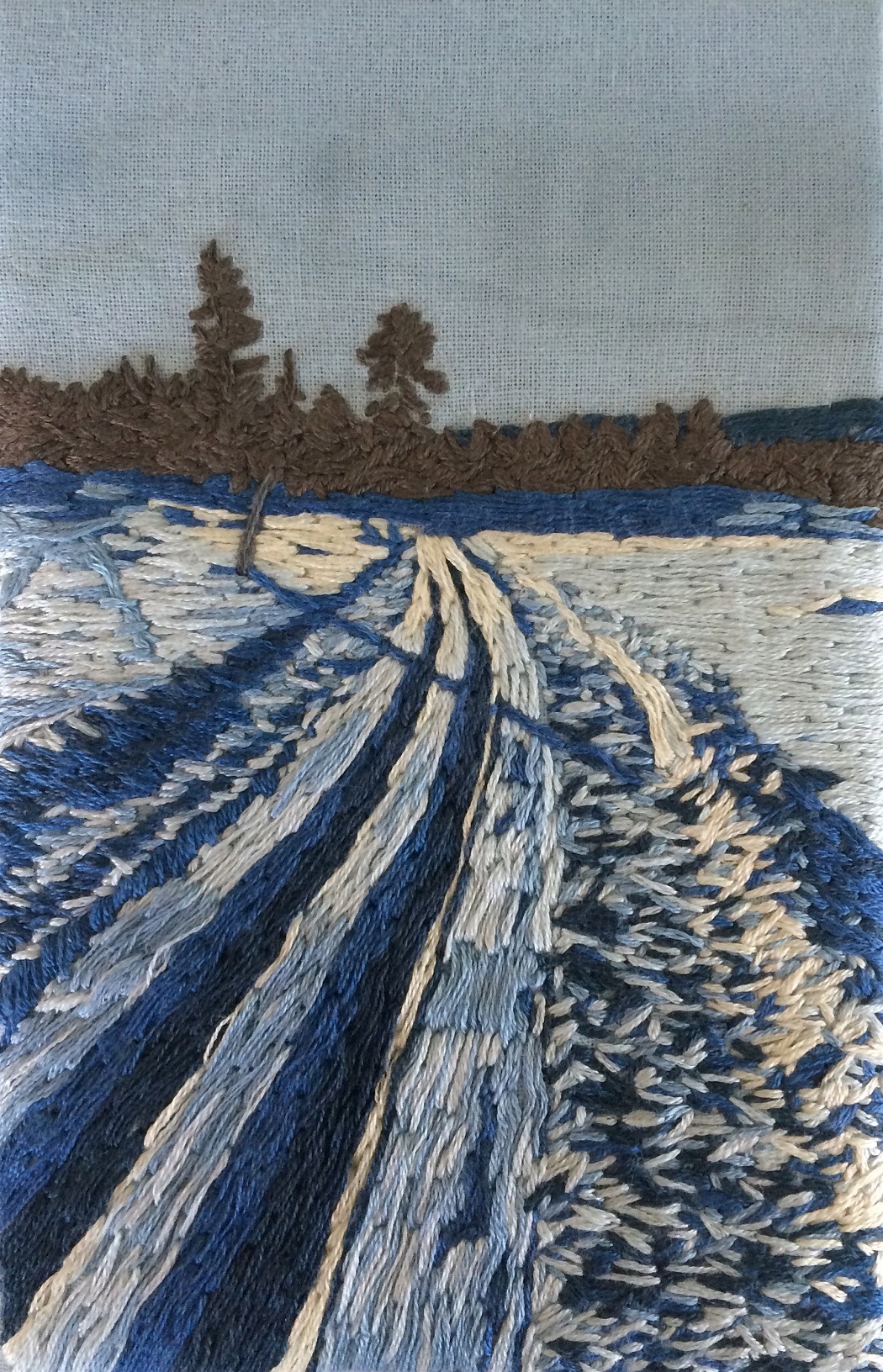
Closet monogrammer
TextileArtist.org: What initially attracted you to textiles as a medium? How was your imagination captured?
Eva Kitok: During my teenage years I used to while away the time sitting in front of the television with my sister, embroidering monograms on pillowcases. This was in the eighties, when we listened to Depeche Mode and The Cure, and wore black. I found embroidery immensely satisfying and my sister shared this passion. We would pretend we lived in the 1700s (apart from the television, obviously!). We’d spend hours talking about embroidery patterns, sharing our new designs with each other. We had an unspoken agreement that we would not tell our friends about our pastime.
Over the years the passion faded away. I still loved the medium but found the motifs boring and uninspiring. I would pick up the needle every now and then but never with the same dedication as in my youth. Then about ten years ago, I stumbled upon textile art on Pinterest and my passion was revived. I was amazed by the use of traditional methods in new contexts. All of a sudden it felt like there were endless possibilities and my head began to buzz with ideas.
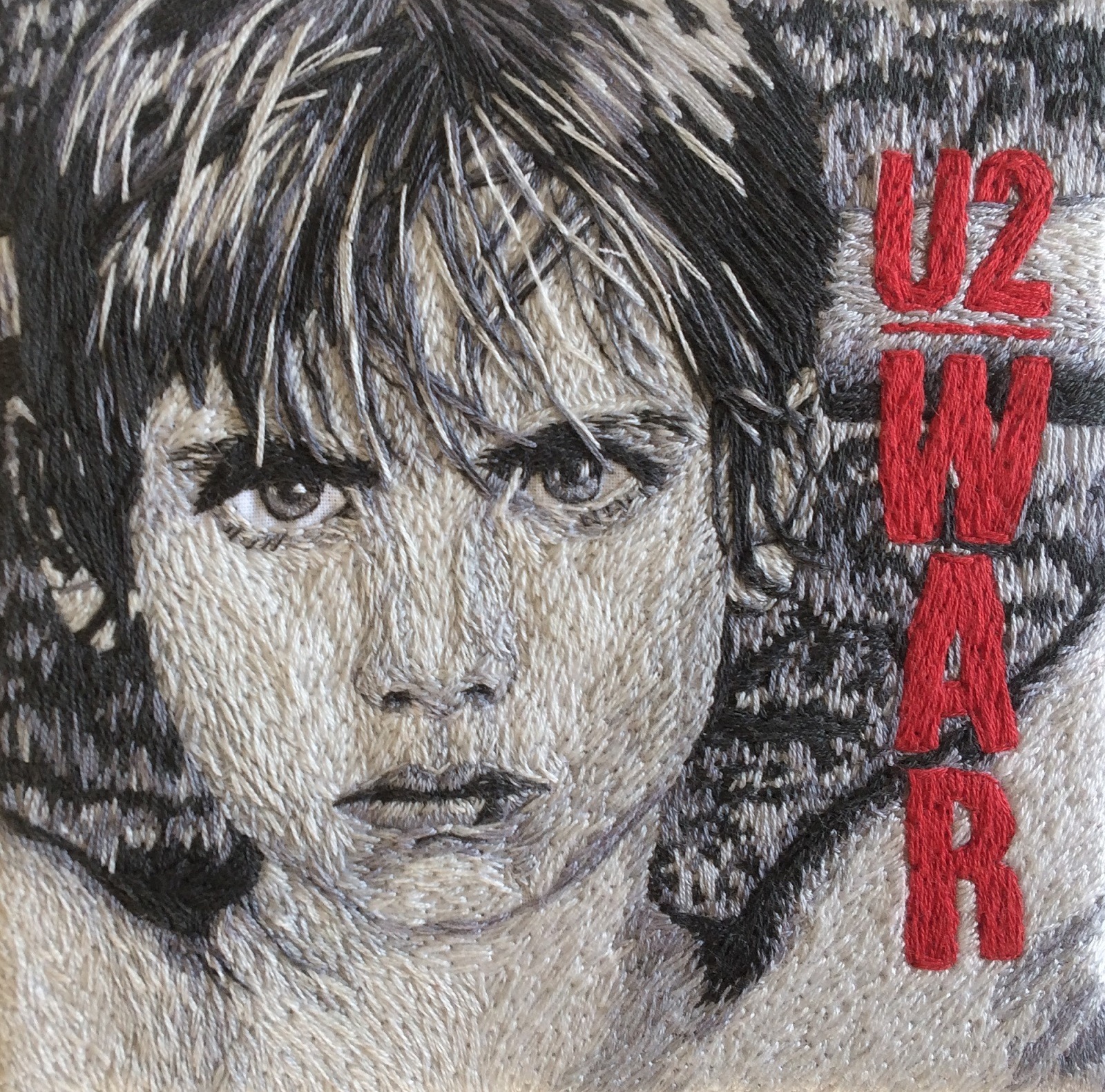
What or who were your early influences and how has your life/upbringing influenced your work?
My mum used to sew many of our childhood clothes so I was quite used to seeing her at the sewing machine. For me it was normal part of motherhood. She used to take me to the fabric shop in town and we’d marvel at the rolls of cloths stacked upon each other, like blank canvases holding the secret of what they could become. I still love the smell of new fabric. It is the smell of imagination running wild!
I was born and brought up in Kiruna, the northernmost town in Sweden. It is a small town 120 kilometres from the next town. We had long winters, nature all around us and I felt like we were invisible to the rest of the world.
The feeling of marginalisation has stuck with me and I often return to it in my work. I want to bring attention to things and phenomena that are often overlooked or forgotten by mainstream media, be it unpaid household work, minorities, life in the north, childhood memories or music albums from the eighties.
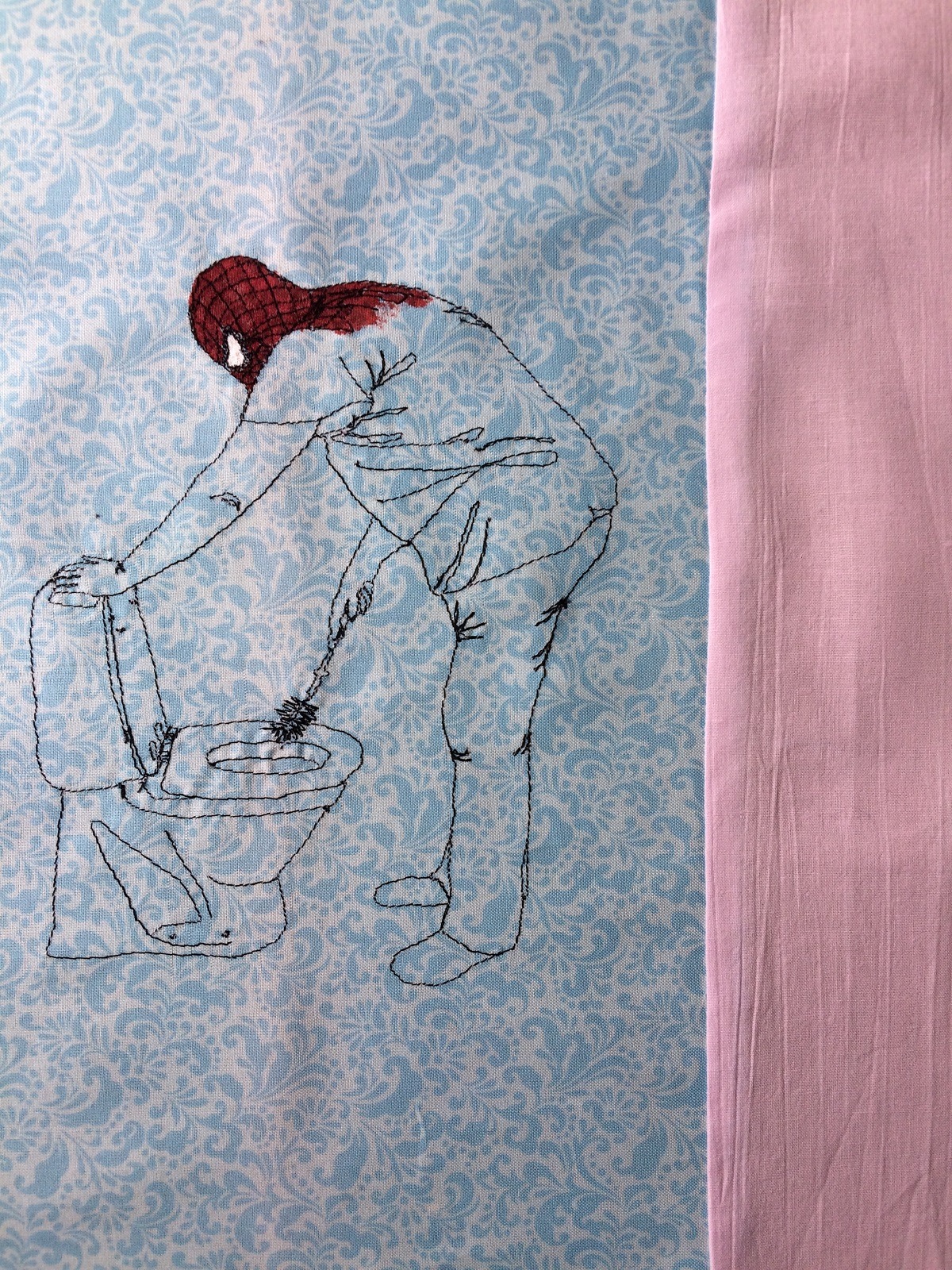
What was your route to becoming an artist?
I trained in education and worked as a high school teacher, later becoming headmistress. Though over the years I felt increasingly frustrated by the way my work intruded on my leisure time. I wanted a job where I could close the office door at the end of the day, and leave my work behind. So I got myself a job as an administrator. A decision I’ve not regretted for a single moment.
Having more time on my hands enabled me to make more textile art. I started to apply to juried shows and was pleasantly surprised when I was accepted to several of them. In retrospect it felt as if I was waiting for this opportunity my whole life. Creating textile art gives me such pleasure and peace of mind. My only worry now is that I will not have enough time to explore all the ideas I wish to try.
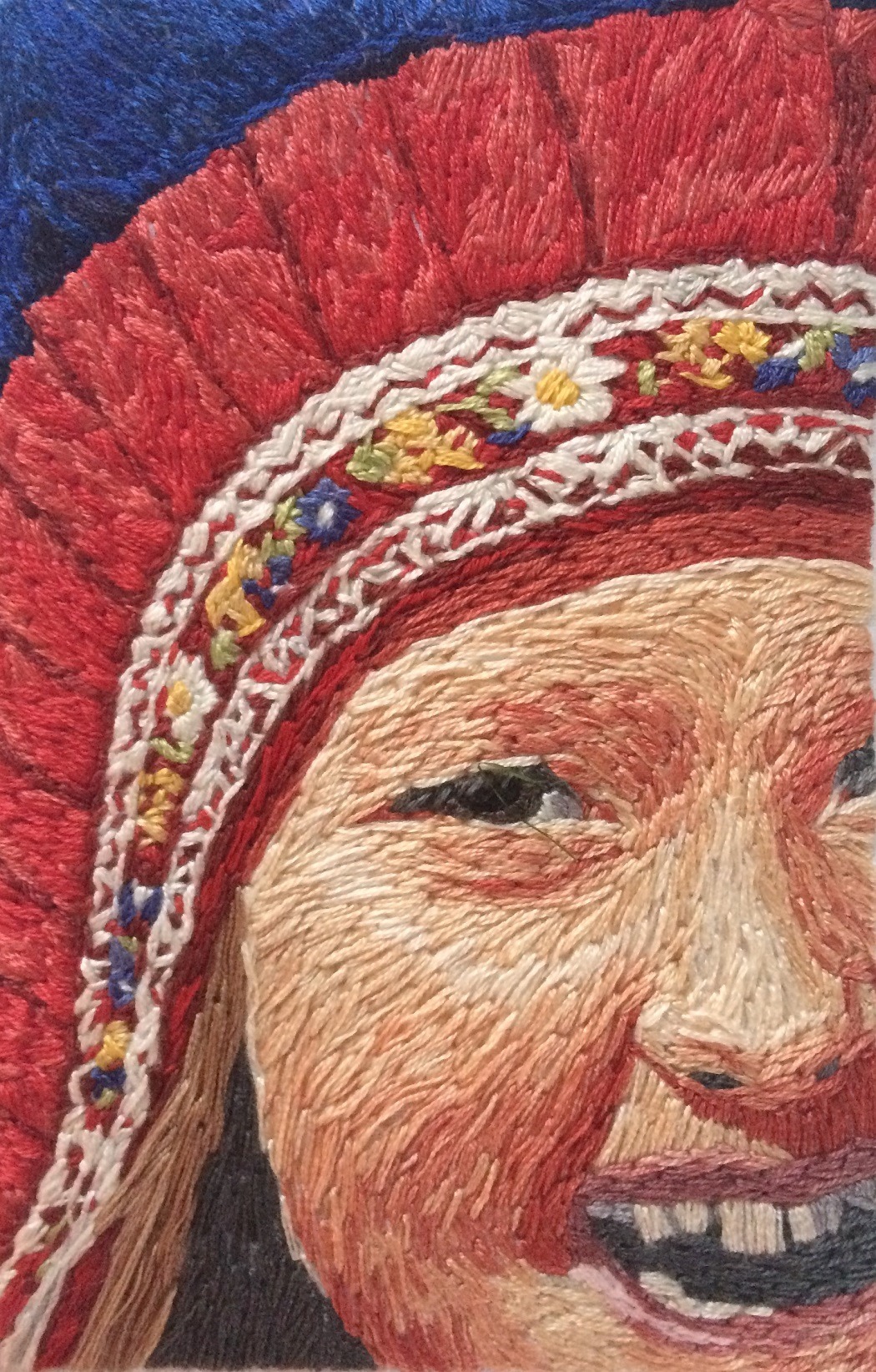
Motivated by the act of stitching
Tell us about your process from conception to creation
For me the creative process consists of three phases. The actual sewing is the last phase. The first part is sifting out an idea to work with. I feel like a baker, kneading ideas, choosing a technique, materials, scale of work and the overall look to aim for. Often I end up going in a totally different direction from what I first had in mind.
Once I have a clear vision of the end result, phase two commences. I research and develop my reference pictures then transfer them onto my chosen fabric. I loathe this part as I get impatient. I can’t wait to start stitching! Finally, when the pattern is on the fabric I get started with the really fun part, the stitching.
Usually I have several projects in different stages of planning going on the same time. I feel that it’s really important that once I have finished a project there’s another one ready for sewing. If I only had projects sitting in the second (boring) phase I fear I’d come to a complete halt, without the motivation of more stitching to push me onwards.
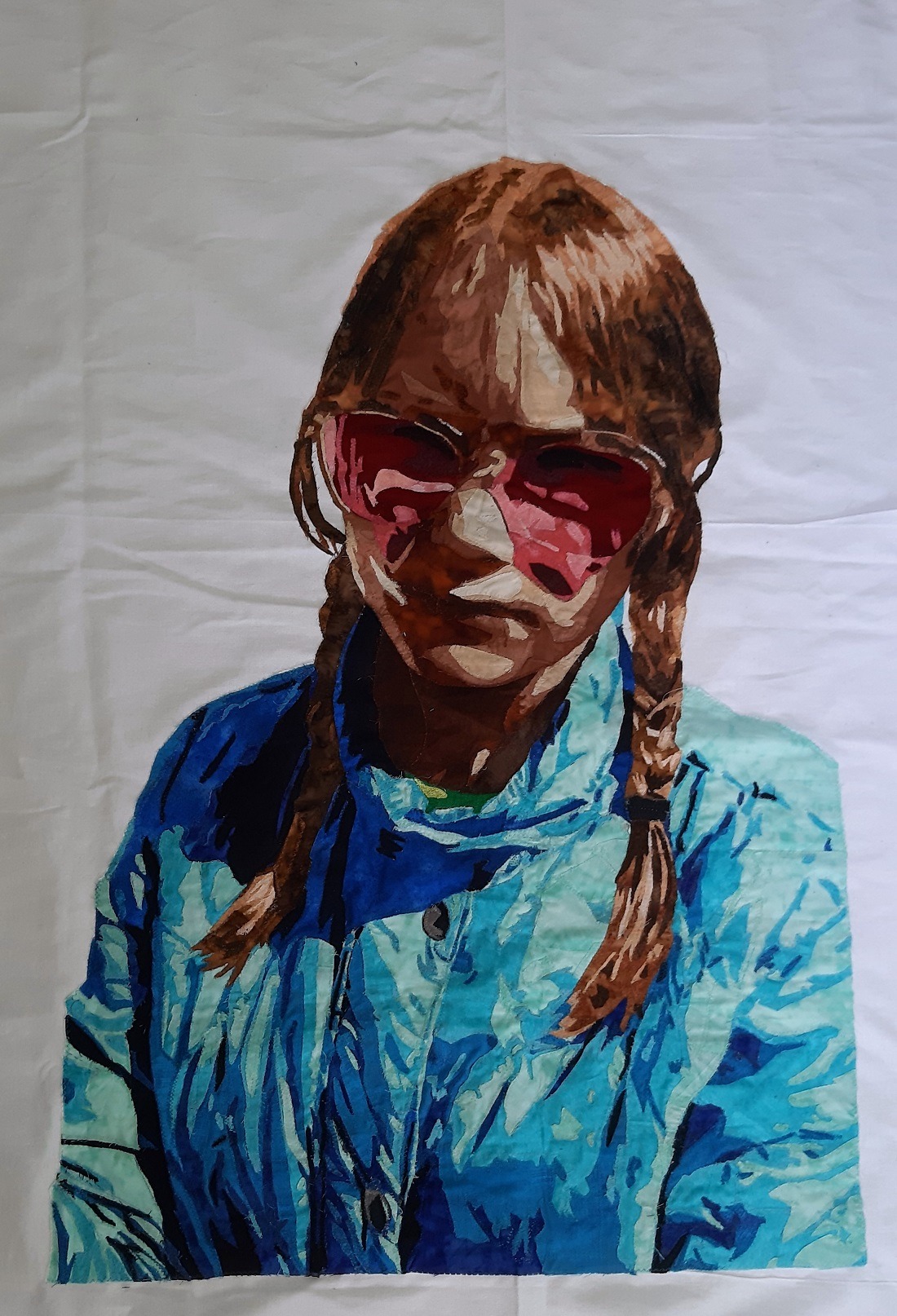
Tell us a bit about your chosen techniques and how you use them
I use three techniques; hand embroidery, machine embroidery and appliqué. Varying between these three techniques works well for me. When I get bored with one I move on to another.
Hand embroidery was my first love and I will always return to it. There is nothing like picking up hand embroidery to relax. You can’t rush it. It is a slow art, my passion and my sanctuary. It takes a long time to finish and the end result is often a rather detailed piece.
Machine embroidery gives pictures that lacks details. They are more like sketches. I often leave loose threads, blank faces and empty backgrounds. I want my work to look like you get a quick glimpse of something and have to fill in the voids using your own experiences. It is much a much quicker technique than the other two.
I use appliqué for really big pieces. It is hard to do on a small scale as the small appliqué fabric pieces would be too difficult to handle. My biggest problem is finding the exact shades of fabric. I still live in the north of Sweden and we have limited numbers of fabric stores. I dream of one day being able to walk into a shop with Hoffman Fabrics in all different colours. It is just not the same ordering online.
My motifs are always people. When choosing or creating a reference photo, I go for one that contains a lot of light and shades to create depth and life. A picture without shades is not worth sewing, as it does not evoke any interest for me.
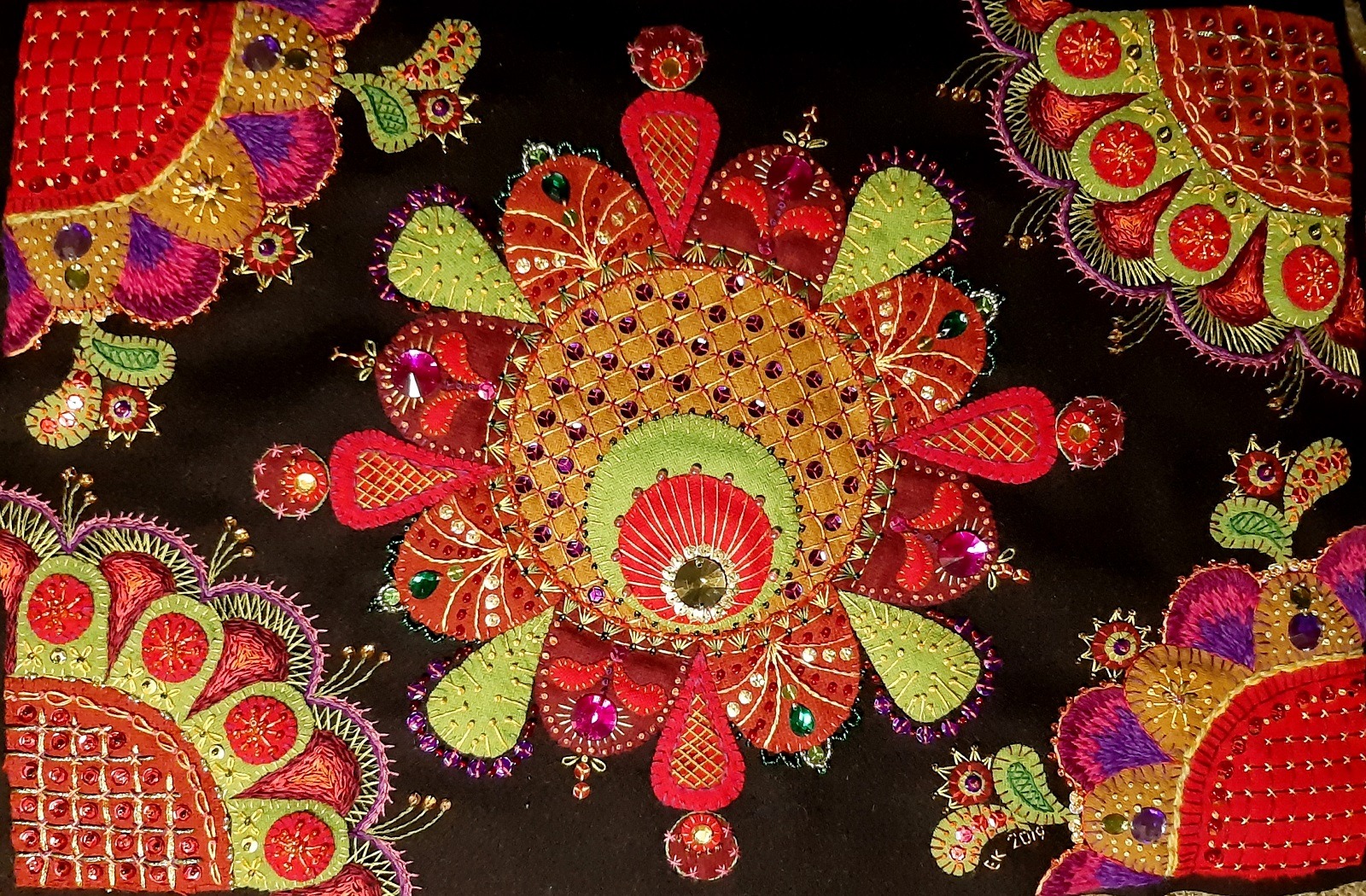
What currently inspires you?
At the moment I am smitten with wool embroidery. This traditional embroidery is made on a wool background, often black, and the embroidery is very colourful and vibrant. And you can use sequins and beads in abundance. So far I am still on the pillowcase-stage, trying out the technique and getting to know the material but I would like to move on to other motifs in the future.
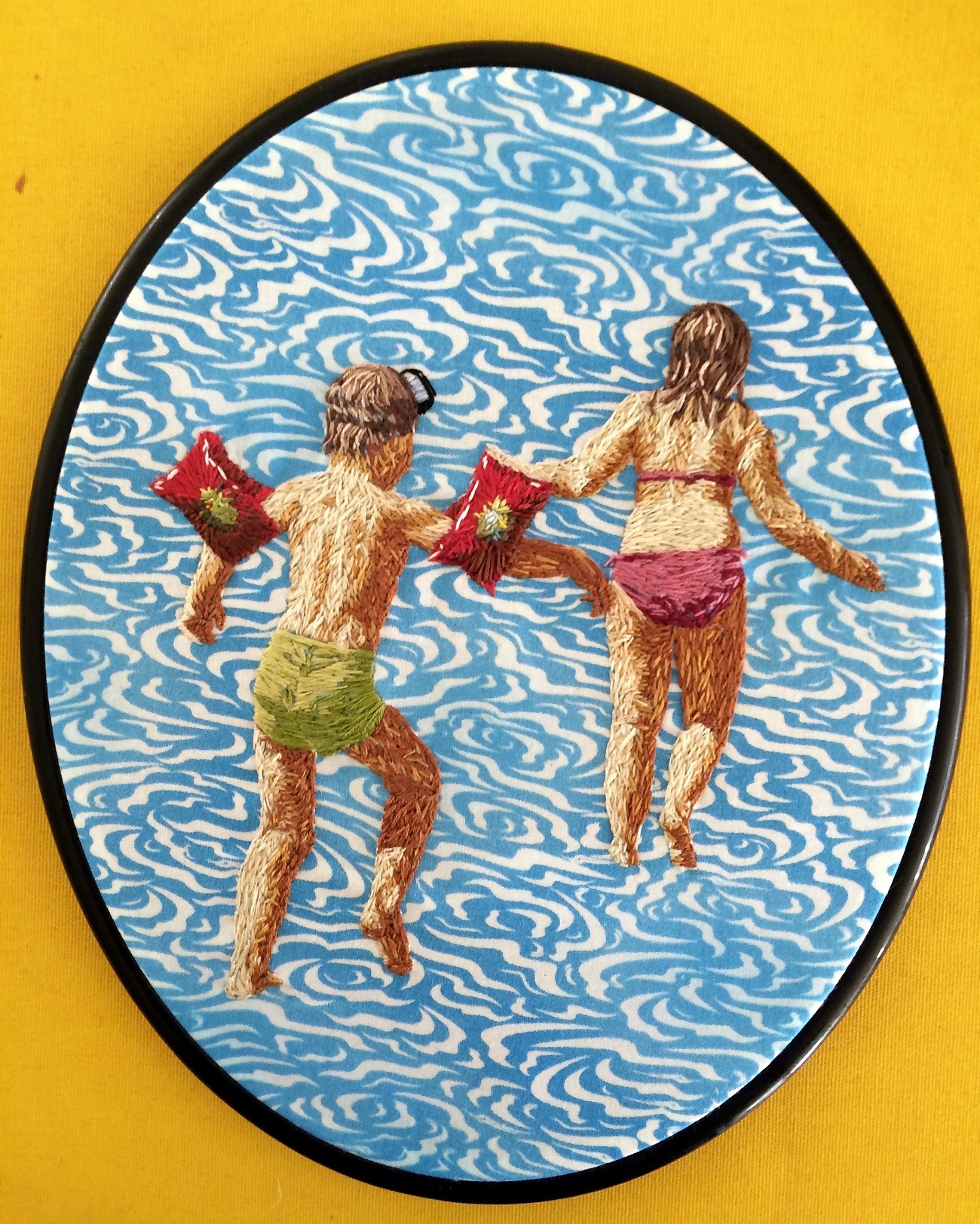
Capturing joy
Tell us about a piece of your work that holds particularly fond memories and why?
I made a series of hand embroidered bathing children. It was the first series I showed to others and it made me realise that other people could enjoy my work. That meant a lot to me.
One of the works shows two of my children, full of joy, running into the sea and not stopping to look back. My daughter is running ahead and her younger brother is following closely, wanting to copy everything his big sister does.
As well as being a fond memory to me, it also symbolises growing up. The children are throwing themselves head-first into the unknown, as children do. I am still trying to come to terms with being the one that is left behind as they explore the world and create their own lives.
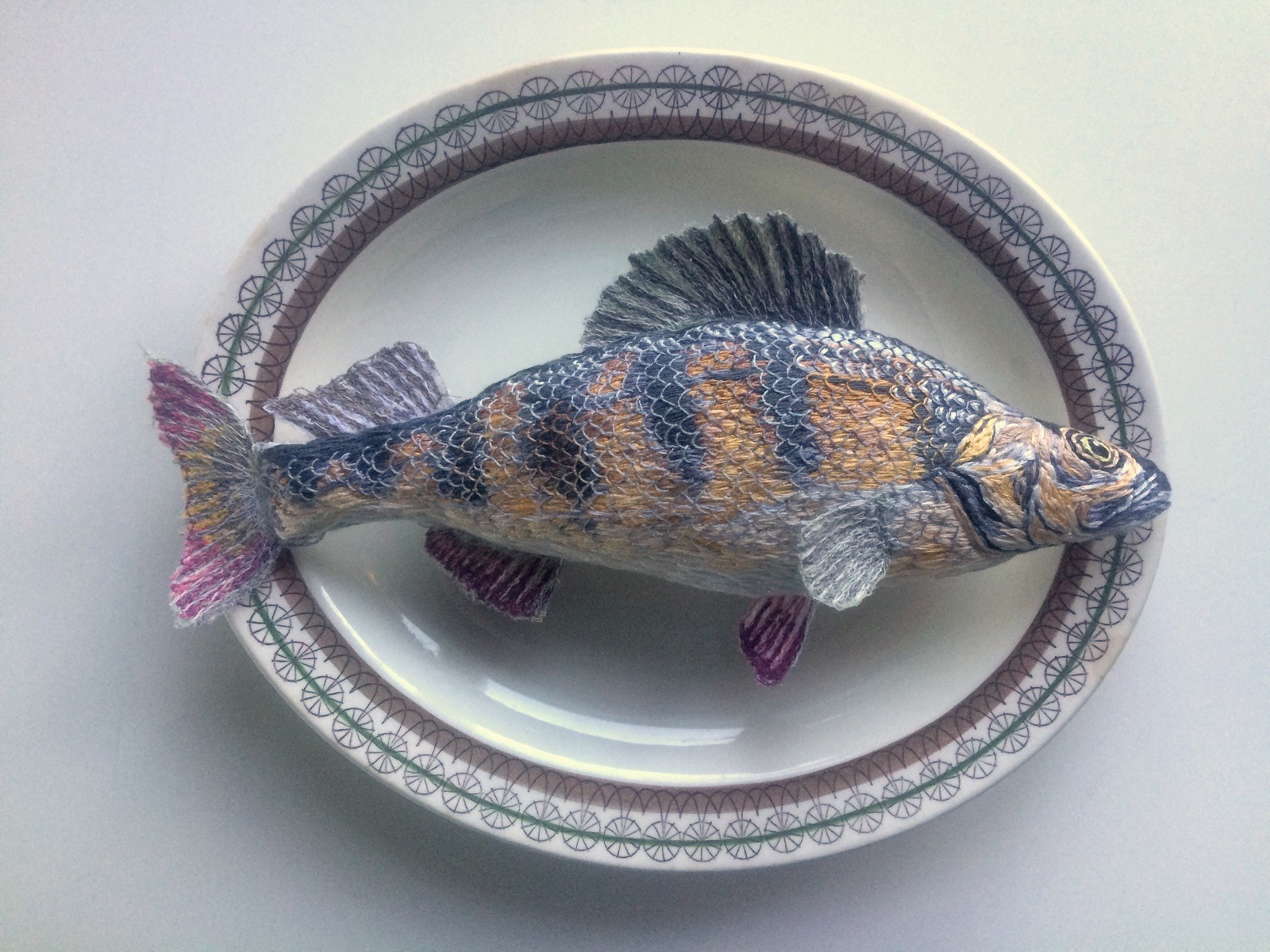
How has your work developed since you began and how do you see it evolving in the future?
I’ve found that pushing myself to try new ideas, regarding both techniques and motifs, has shown me that more is possible than I first thought. Sometimes I return to the same idea several times over a couple of years before I figure out how to get the result I am looking for.
I guess I have become braver in trying out things and gained a new belief in myself.
There are so many things I still want explore, like making hand embroideries on a bigger scale, painting on fabric as a background to embroidery, creating three dimensional embroideries, and embroidering on other materials than textiles. I would also love to embroider more with my sister in the future, but unfortunately she is still working in teaching…
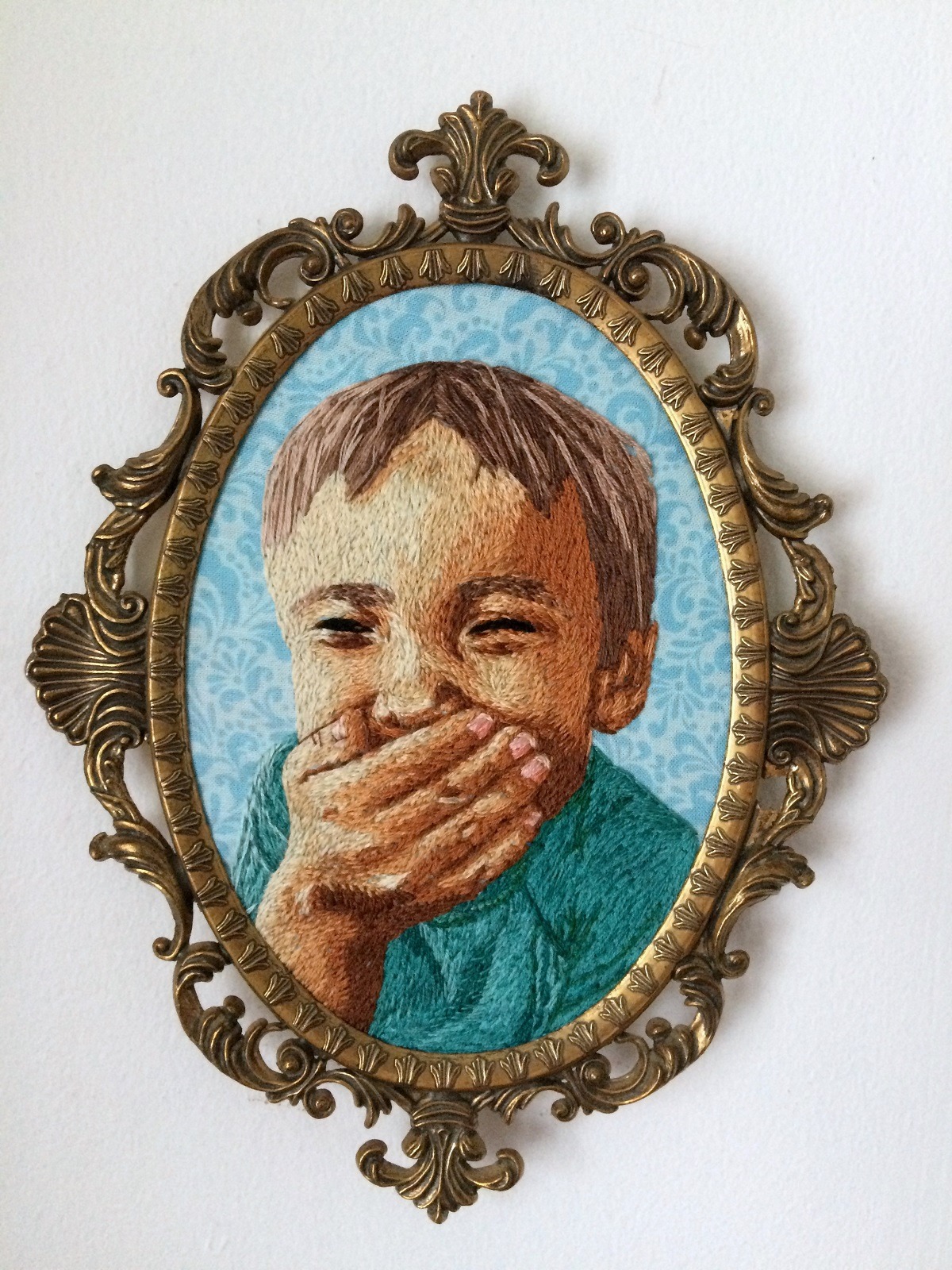
What advice would you give to an aspiring textile artist?
Take pictures of what you have created at the end of every session. It is hard to see progress from day to day so it’s easy to feel like you have achieved nothing at all. Looking back at photographs will help you to see your progress.
And most important of all, if what you are doing makes your heart sing, then continue. Explore what makes you happy and where you find your passion.
For more information visit www.evakitok.com
Do you like to switch between different techniques, too? Let us know your favourites using the buttons below.
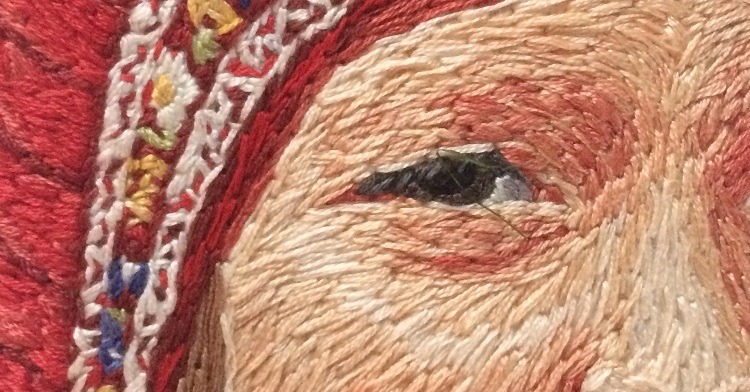

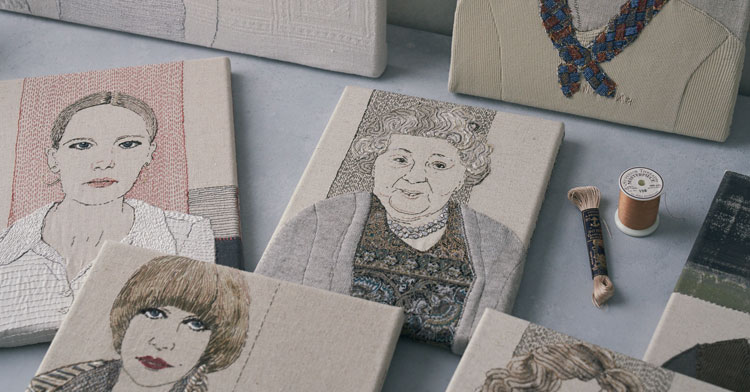
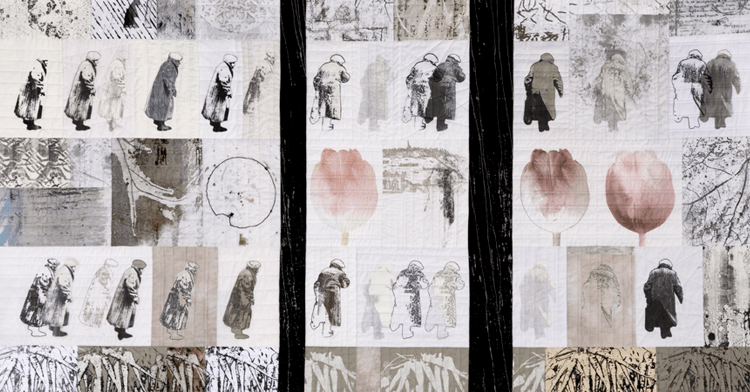
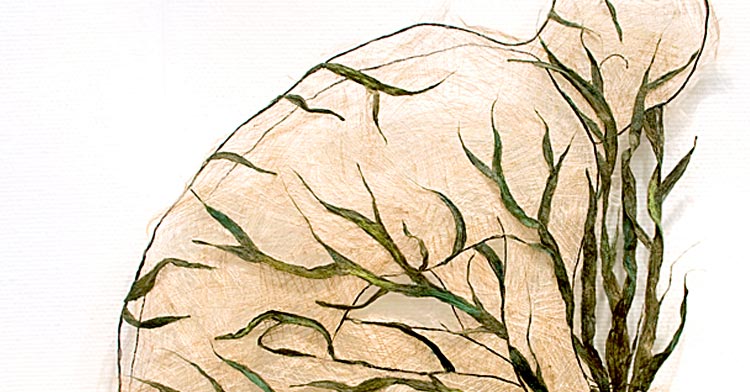
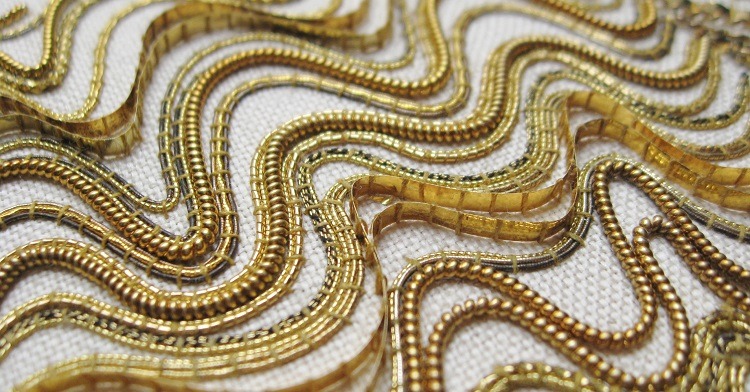
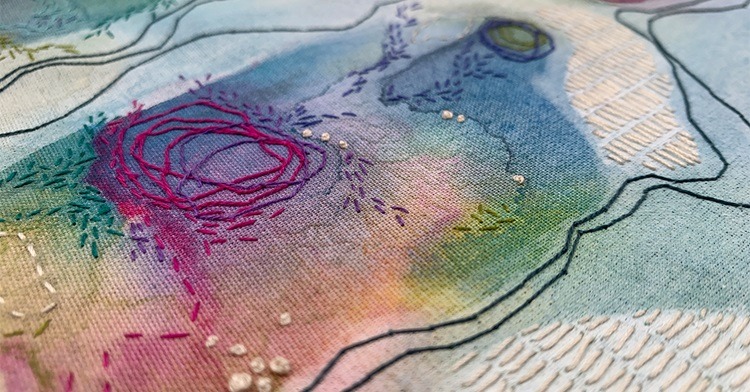
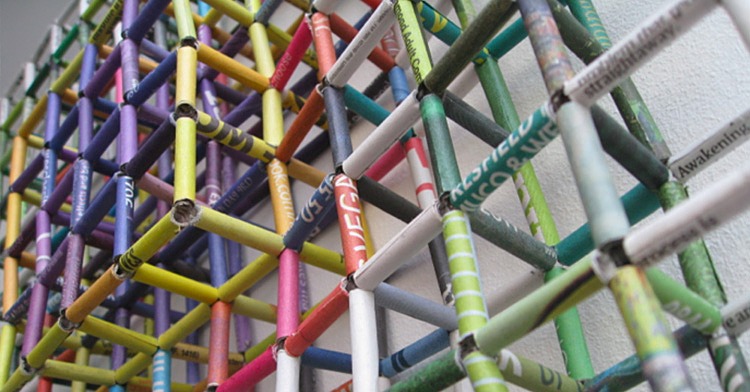
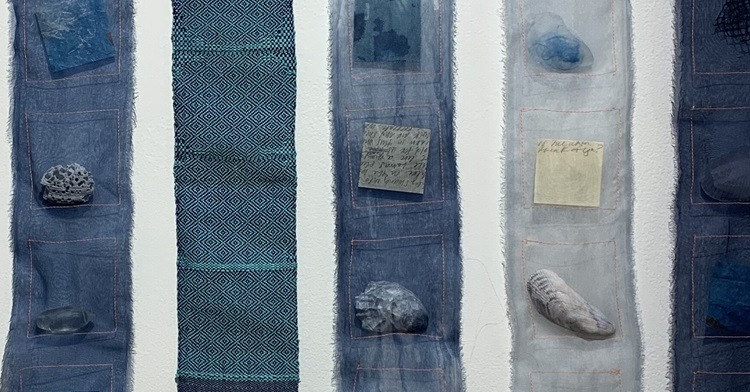
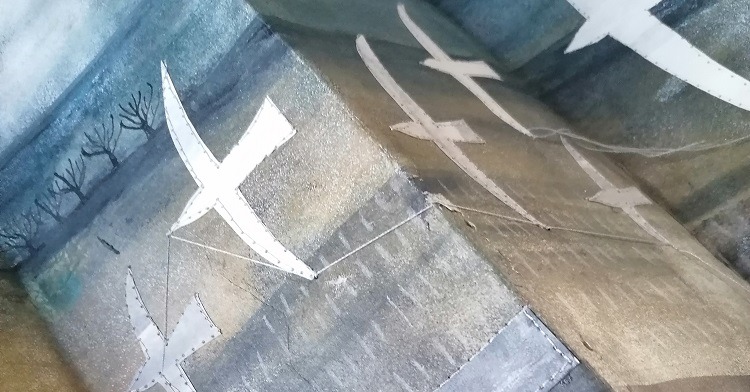
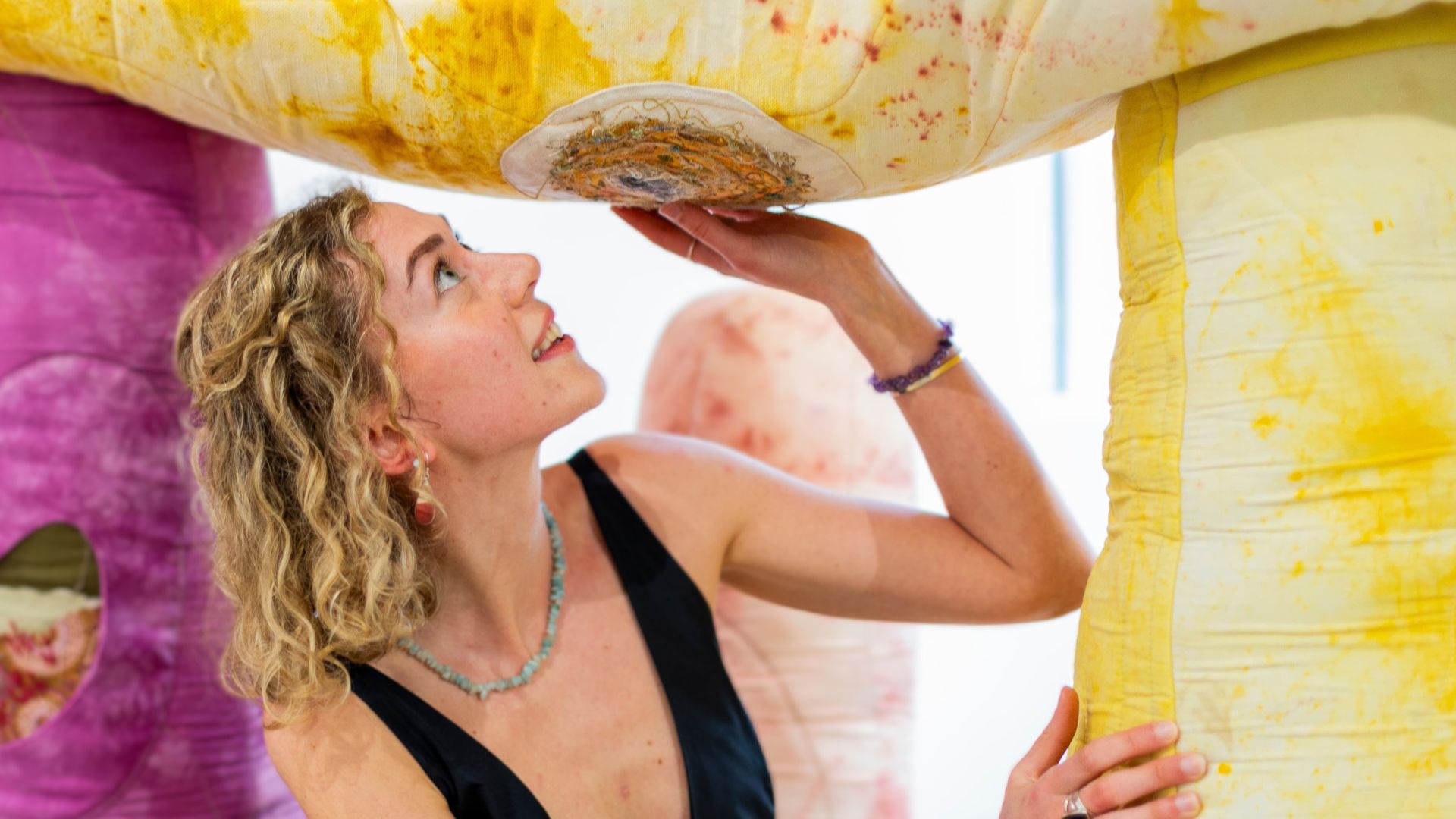
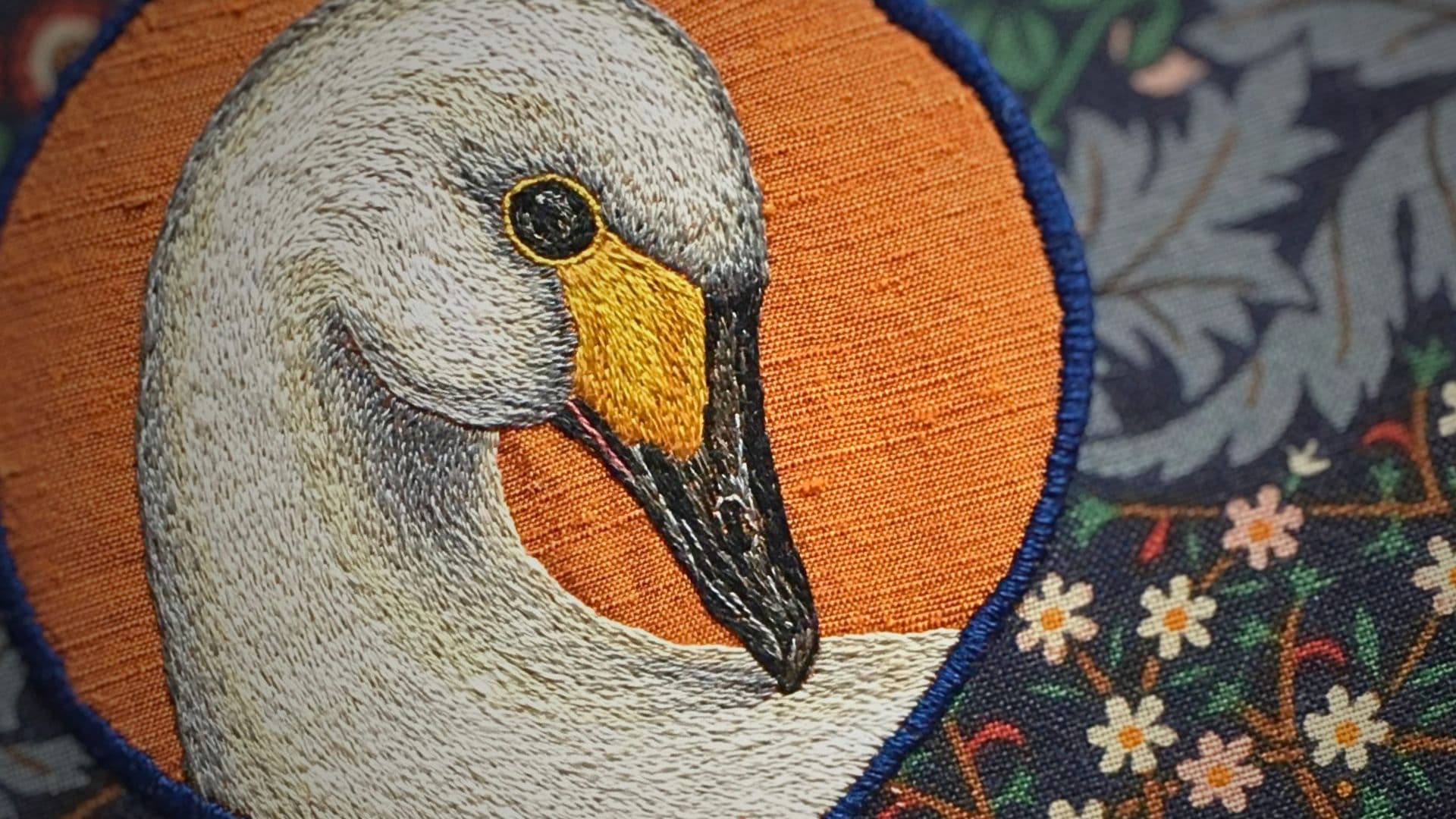
2 comments
Eva
Thank you for your article. I love the way you describe the phases of a project. this is what i am looking for now. I have spent the last year learning embroidery stitches and trying out various techniques. your article has given me some clarity as to what i feel works well in my pieces. I love eco dyeing and I have recently been using water colour fabric pens and they have been a wonderful technique to use in my pieces. my stitches seem to be so right on a painted background. Your article and information has been enormously interesting. Thank you and regards
Michèle Coupez
thank you very much for your work of sharing all these inspiring discoveries
Nice Xmas time for ll your team